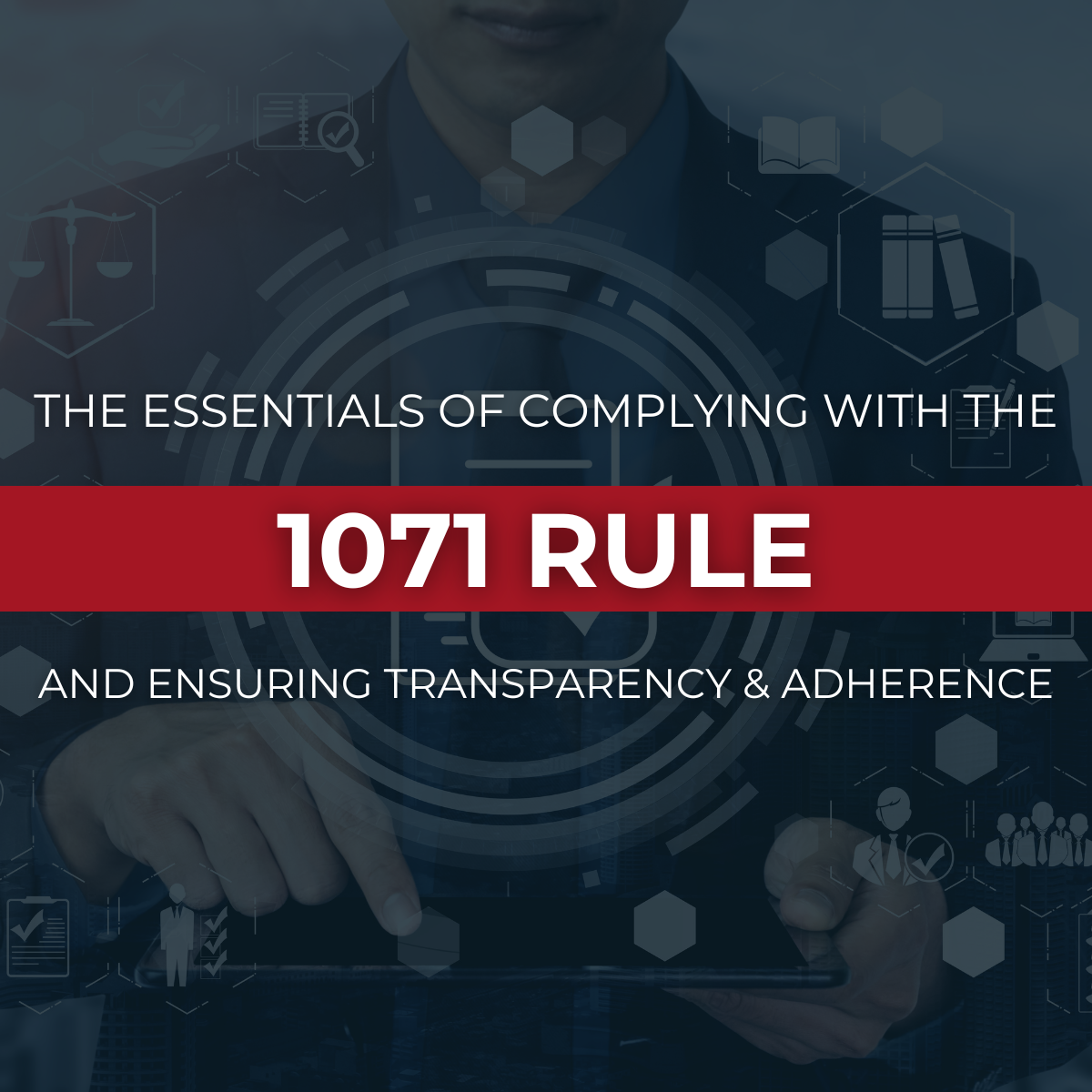Overdraft programs and fees: Navigating the regulatory maze
By: Karen S. Clower, CRCM and William J. Showalter, CRCM, CRP
Fee income practices in overdraft programs have garnered increasing attention from regulatory bodies such as the CFPB, OCC, NCUA, and FDIC. The risks associated with overdraft practices are growing, and overlooking them can pose significant threats to your financial institution.
These regulatory developments are of particular concern for both APSN (Authorize Positive, Settle Negative) and NSF (Non-Sufficient Funds) fee practices. With both federal and state regulators scrutinizing these areas, it’s a critical time for financial institutions to review their overdraft and insufficient funds procedures. Unpacking the intricate world of overdraft programs, understanding fair banking risks, and adopting best practices to mitigate them have never been more crucial.
Multiple re-presentment fees under the microscope
The FDIC revised their Supervisory Guidance on Multiple Re-Presentment NSF Fees in June 2023. The core message from this guidance is the importance of transparency in re-presentment practices. The FDIC emphasizes that re-presentment practices may be deceptive when lacking clear disclosure and unfair when they lead to the assessment of multiple NSF fees for a single transaction.
A re-presentment occurs when a transaction is initially declined due to insufficient funds, followed by the merchant resubmitting the transaction, which may incur additional NSF fees. In many instances, customer disclosures do not fully convey the nature of these re-presentment practices, elevating the risk of consumer harm and regulatory violations. It is prudent for financial institutions to review and update disclosures to avoid causing consumer harm and accumulating violations.
Identifying potential risks associated with NSF fees on re-presented transactions
Examiners have identified several risk factors related to the assessment of NSF fees on re-presented transactions:
- Consumer compliance risk: Charging multiple NSF fees for the same unpaid transaction can breach Section 5 of the FTC Act, which prohibits unfair or deceptive practices. Not adequately informing customers can mislead and potentially harm them.
- Deceptive Practices: The FDIC finds charging multiple NSF fees without proper disclosure deceptive.
- Unfair Practices: Inadequate customer advice on fee practices can be unfair, particularly if it causes harm and offers no benefits to the consumer.
- Third-party risk: Third-party involvement in payment processing and tracking re-presented items can lead to risks. Institutions should monitor these arrangements closely.
- Litigation risk: Charging multiple NSF fees may lead to litigation. Many institutions have faced class-action lawsuits and substantial settlements for inadequate fee disclosures.
Managing NSF fee risks
The FDIC encourages financial institutions to review their practices and disclosures regarding NSF fees for re-presented transactions. Note that a highlight of the most recent update to their supervisory guidance is that their current approach does not involve requesting financial institutions to conduct lookback reviews absent a likelihood of substantial consumer harm. To mitigate the risk of consumer harm and legal violations related to multiple re-presentment NSF fees, financial institutions are encouraged to consider the following:
- Eliminating NSF fees.
- Charging only one NSF fee for the same transaction, even if it’s re-presented.
- Reviewing policies and practices, clarifying re-presentment practices, and providing customers with updated disclosures.
- Clearly and prominently disclosing NSF fee amounts, when they are imposed, and the conditions under which multiple fees may apply to a single transaction.
- Reviewing customer notification practices and fee timing to enable customers to avoid multiple fees for re-presented transactions.
These recommendations are based on supervisory observations to date and do not impose any legal obligations to financial institutions. While not mandatory, these steps help in reducing the risk of consumer harm.
FDIC’s supervision of re-presentment NSF fees: A closer look
The FDIC has a specific approach when it comes to overseeing and enforcing regulations regarding multiple re-presentment NSF fee practices. Their main aim is to identify and correct issues related to re-presentment, with a focus on ensuring that customers who have been harmed receive the necessary solutions.
As part of their process for assessing compliance management systems, the FDIC acknowledges institutions that take proactive steps to identify and rectify violations. Importantly, if institutions have already addressed these violations before a consumer compliance examination, examiners generally won’t cite UDAP violations.
When financial institutions proactively identify issues related to re-presentment NSF fees, the FDIC has clear expectations:
- They should take corrective actions, which include providing restitution to affected customers.
- There should be a prompt update to NSF fee disclosures and account agreements for all customers, both new and existing.
- Consideration should be given to implementing additional risk mitigation practices to reduce potential unfairness risks.
- Monitoring of ongoing activities and customer feedback is essential to ensure that corrective actions are sustained over time.
The FDIC evaluates the need for restitution by considering the potential harm to consumers as a result of the practice, the institution’s record-keeping practices, and any challenges associated with collecting and reviewing transaction data or information related to the frequency and timing of re-presentment fees. In cases where examiners identify law violations related to re-presentment NSF fee practices that have not been self-identified and fully corrected before an examination, the FDIC may contemplate various supervisory or enforcement actions, including the imposition of civil monetary penalties and the requirement for restitution where necessary.
What about APSN fee practices?
The regulatory focus extends beyond just re-presentment fees. One noteworthy concern is the practice of charging overdraft fees for transactions that were initially authorized with a positive balance but later settled with a negative balance, referred to as APSN transactions. Below is an overview of the FDIC’s Supervisory Guidance on Charging Overdraft Fees for Authorize Positive, Settle Negative Transactions, which was revised in April 2023 to expand upon the related 2019 Supervisory Highlights article.
Guidance overview
Complexity in Overdraft Programs: Overdraft programs, transaction clearing, and settlement processes are intricate. APSN transactions involve consumers being assessed overdraft fees when they had sufficient account balances at the time of transaction initiation but no longer at settlement. This means it is hard for consumers to predict when fees might be assessed and how to avoid them.
Available Balance vs. Ledger Balance: Financial institutions typically use either an available balance method or a ledger balance method for assessing overdraft-related fees. The available balance can be affected by pending debit transactions. Some institutions, especially with the available balance method, assess overdraft fees on transactions authorized when the available balance is positive but posted when the balance is negative.
Unintended Consequences: In some cases, this practice leads to multiple overdraft fees being charged. Unanticipated overdraft fees can cause considerable harm to consumers. The consumer cannot reasonably avoid these fees, and their complexity further compounds the issue. This situation raises the risk of violations of consumer protection laws.
Mitigating risks: Financial institutions are encouraged to review their practices regarding charging overdraft fees for APSN transactions. This entails ensuring that customers are not charged overdraft fees for transactions they could not anticipate or avoid. This includes monitoring third-party arrangements for compliance, evaluating core processing systems, and improving disclosures to accurately convey fee practices.
With a deep understanding of re-presentment and APSN transactions, financial institutions can effectively navigate the complex landscape of fee income and compliance. A proactive approach can aid in protecting consumers, ensuring regulatory compliance, and maintaining your institution’s reputation.
Balancing overdraft fee income and compliance
Weighing compliance and reputational risks against the revenue your overdraft program generates is crucial. While fee income is essential, safeguarding your financial institution’s reputation should always be a top priority. Striking the right balance between compliance and revenue is key.
Regulatory insights and recent enforcement actions
To stay ahead in the realm of overdraft programs, monitoring the insights and actions of regulatory bodies is essential. The CFPB, FRB, OCC, NCUA, and FDIC provide guidance and updates that can directly impact your operations. Recent enforcement actions underscore the consequences of non-compliance. Analyzing these cases can provide insights into areas where institutions have faltered and help you steer clear of similar missteps.
Your overdraft compliance solution: Young & Associates
Managing overdraft programs while staying compliant with fair banking regulations is a complex task. At Young & Associates, we are here to guide you through this maze. We help ensure that your institution not only thrives financially but also maintains a strong reputation. By understanding the risks, learning from common pitfalls, and implementing best practices, you can create a robust overdraft program..
For more in-depth guidance tailored to your unique circumstances, reach out to our team of experts. Together, we can navigate the regulatory compliance landscape and keep your financial institution on the path to success. Contact us today.






